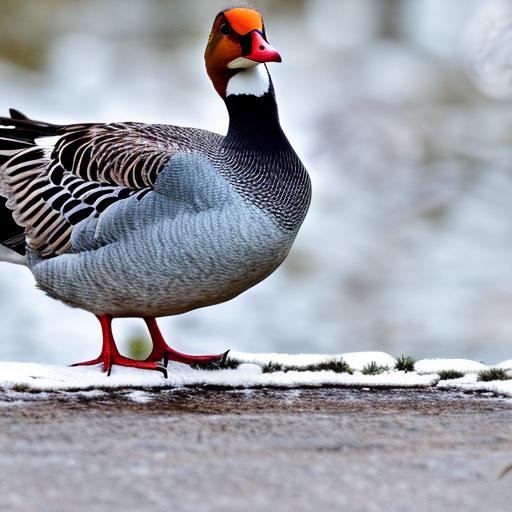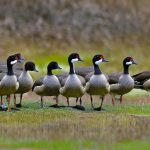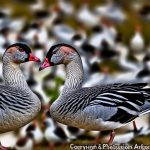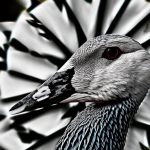Geese are known for their strong family bonds and their instinct to protect their territory. They are highly social birds and often travel in flocks, making them a formidable force when it comes to defending their nesting sites. Geese are also known for their honking, which is a form of communication within the flock. When geese feel threatened, they will honk loudly to alert other members of the flock and to intimidate potential predators. Additionally, geese are known to be territorial and will aggressively defend their nesting sites, especially during the breeding season. Understanding these behaviors is crucial when it comes to effectively deterring geese from unwanted areas.
Geese are also drawn to areas with abundant food sources and water. They are herbivores and will graze on grasses, grains, and aquatic plants. This makes golf courses, parks, and waterfront properties particularly attractive to geese. Geese are also drawn to open spaces near water, as it provides them with a clear view of potential predators. Understanding these preferences can help in implementing effective deterrent strategies to discourage geese from frequenting specific areas.
Key Takeaways
- Geese are territorial and protective of their nesting areas, which can lead to aggressive behavior towards humans.
- Physical barriers such as fences, hedges, and netting can effectively deter geese from entering certain areas.
- Sound deterrents like ultrasonic devices and visual deterrents like predator decoys can help keep geese away from unwanted areas.
- Natural repellents like grape seed extract and garlic-based sprays can be used to discourage geese from foraging in specific areas.
- Creating an unwelcoming environment through landscaping and removing food sources can make an area less attractive to geese.
- Establishing alternative habitats like ponds and wetlands away from human activity can provide geese with a suitable alternative nesting and foraging area.
- Seeking professional help from wildlife management experts can provide effective and humane solutions for managing geese behavior.
Physical Barriers and Deterrents
One of the most effective ways to deter geese from unwanted areas is by implementing physical barriers. This can include installing fences, hedges, or other structures that prevent geese from accessing certain areas. Fences can be particularly effective in keeping geese away from gardens, lawns, and other landscaped areas. Additionally, creating barriers around bodies of water can discourage geese from congregating in these areas.
Another physical deterrent that can be effective in deterring geese is the use of visual deterrents such as predator decoys or reflective objects. Predator decoys, such as fake coyotes or dogs, can create the illusion of danger for geese and discourage them from settling in an area. Reflective objects, such as shiny tape or balloons, can also be effective in deterring geese by creating a sense of unease and making the area less appealing to them.
Sound and Visual Deterrents
In addition to physical barriers, sound and visual deterrents can also be effective in deterring geese from unwanted areas. One common sound deterrent is the use of sonic devices that emit distress calls of geese or other bird species. These distress calls can create a sense of danger for geese and encourage them to leave the area. Another sound deterrent is the use of propane cannons or other loud noises that startle geese and discourage them from settling in an area.
Visual deterrents can also be effective in deterring geese from unwanted areas. One common visual deterrent is the use of lasers or strobe lights that create a sense of unease for geese and make the area less appealing to them. Additionally, the use of scarecrows or other human-like figures can create a sense of danger for geese and discourage them from settling in an area.
Natural Repellents
Natural repellents can also be effective in deterring geese from unwanted areas. One common natural repellent is the use of chemical sprays that create an unpleasant taste or smell for geese. These sprays can be applied to grass, plants, or other surfaces to discourage geese from grazing in these areas. Another natural repellent is the use of garlic or chili pepper-based sprays that create an unpleasant taste for geese and discourage them from settling in an area.
Another natural repellent that can be effective in deterring geese is the use of natural predators such as dogs or birds of prey. The presence of these natural predators can create a sense of danger for geese and discourage them from settling in an area. Additionally, the use of natural habitat modifications such as planting tall grasses or shrubs can create a less appealing environment for geese and discourage them from frequenting specific areas.
Creating an Unwelcoming Environment
Creating an unwelcoming environment for geese is crucial in deterring them from unwanted areas. This can include modifying the landscape to make it less appealing to geese, such as planting tall grasses or shrubs that create obstacles for geese and discourage them from settling in an area. Additionally, reducing access to food sources by removing or covering potential food items can discourage geese from frequenting specific areas.
Another way to create an unwelcoming environment for geese is by implementing habitat modifications such as adding slopes or barriers around bodies of water to make it more difficult for geese to access these areas. Additionally, reducing open spaces near water can make it less appealing for geese to settle in an area. Creating an unwelcoming environment for geese can help in deterring them from unwanted areas and encouraging them to find alternative habitats.
Establishing Alternative Habitats
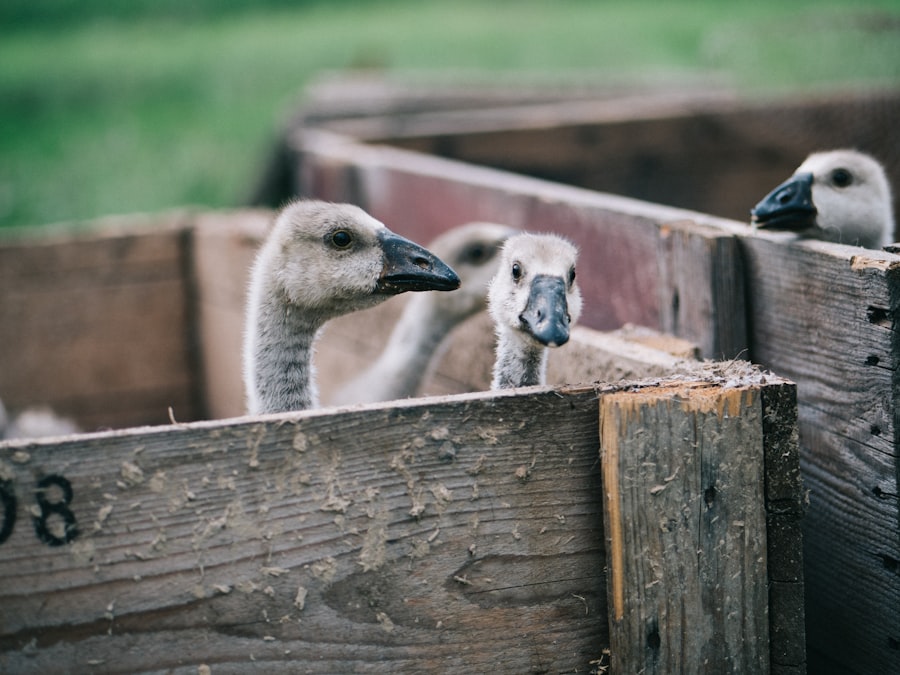
Establishing alternative habitats for geese can also be an effective way to deter them from unwanted areas. This can include creating designated feeding areas away from landscaped areas or bodies of water to encourage geese to settle in these alternative habitats instead. Additionally, providing nesting structures or shelters in alternative locations can encourage geese to establish their nesting sites away from unwanted areas.
Another way to establish alternative habitats for geese is by creating buffer zones between human-occupied areas and natural habitats where geese are more likely to settle. This can include planting native vegetation or creating natural barriers that discourage geese from frequenting specific areas. Establishing alternative habitats for geese can help in deterring them from unwanted areas and reducing conflicts with humans.
Seeking Professional Help
In some cases, deterring geese from unwanted areas may require professional assistance. Wildlife management professionals have the expertise and resources to implement effective deterrent strategies tailored to specific situations. They can conduct site assessments to identify factors that attract geese and develop comprehensive management plans to deter them from unwanted areas.
Professional wildlife management services may include the use of advanced deterrent technologies such as laser systems, sonic devices, or chemical repellents that are not readily available to the general public. Additionally, wildlife management professionals can provide ongoing monitoring and maintenance to ensure the effectiveness of deterrent strategies over time.
In conclusion, understanding the behavior of geese is crucial in implementing effective deterrent strategies to discourage them from unwanted areas. Physical barriers, sound and visual deterrents, natural repellents, creating an unwelcoming environment, establishing alternative habitats, and seeking professional help are all important components of a comprehensive approach to deterring geese from specific areas. By combining these strategies and tailoring them to specific situations, it is possible to effectively manage conflicts with geese and encourage them to find alternative habitats away from human-occupied areas.
If you’re looking for effective methods to keep geese off your driveway, you might also be interested in learning about the best placement for a chicken coop. Understanding where to put your chicken coop can not only benefit your chickens but also help in managing the overall poultry environment. Check out this insightful article on PoultryWizard to discover the ideal locations for your chicken coop and how it can contribute to maintaining a harmonious backyard space.
FAQs
What are some effective methods to keep geese off driveways?
Some effective methods to keep geese off driveways include installing physical barriers such as fences or netting, using visual deterrents like scarecrows or reflective tape, and employing sound deterrents such as noise-making devices.
Are there any natural deterrents that can be used to keep geese off driveways?
Yes, there are natural deterrents that can be used to keep geese off driveways. These include planting tall grasses or shrubs to create an unappealing environment for geese, as well as using natural predators like dogs or birds of prey to discourage geese from frequenting the area.
What are some non-lethal methods to deter geese from driveways?
Non-lethal methods to deter geese from driveways include using visual deterrents such as decoy predators or reflective objects, employing sound deterrents like noise-making devices, and creating physical barriers such as fences or netting to prevent geese from accessing the area.
Are there any regulations or laws regarding the deterrence of geese from driveways?
Regulations and laws regarding the deterrence of geese from driveways may vary by location. It is important to check with local authorities or wildlife agencies to ensure that any methods used to deter geese comply with applicable regulations and laws.
What are some long-term solutions for keeping geese off driveways?
Some long-term solutions for keeping geese off driveways include modifying the habitat to make it less appealing to geese, using a combination of deterrent methods to discourage geese from frequenting the area, and implementing regular maintenance and monitoring to ensure the effectiveness of the chosen deterrents.
Meet Walter, the feathered-friend fanatic of Florida! Nestled in the sunshine state, Walter struts through life with his feathered companions, clucking his way to happiness. With a coop that’s fancier than a five-star hotel, he’s the Don Juan of the chicken world. When he’s not teaching his hens to do the cha-cha, you’ll find him in a heated debate with his prized rooster, Sir Clucks-a-Lot. Walter’s poultry passion is no yolk; he’s the sunny-side-up guy you never knew you needed in your flock of friends!

